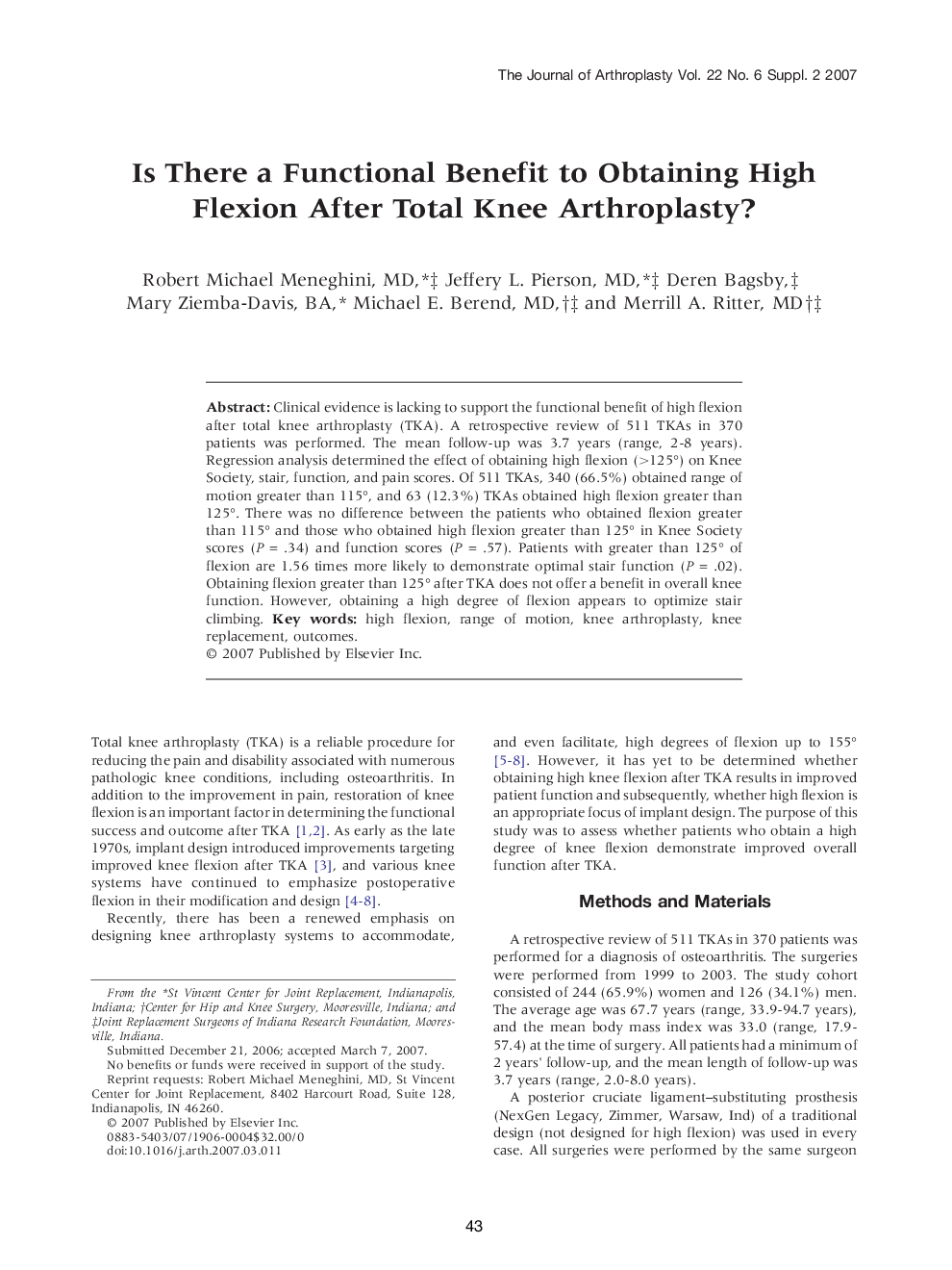| Article ID | Journal | Published Year | Pages | File Type |
|---|---|---|---|---|
| 4063479 | The Journal of Arthroplasty | 2007 | 4 Pages |
Clinical evidence is lacking to support the functional benefit of high flexion after total knee arthroplasty (TKA). A retrospective review of 511 TKAs in 370 patients was performed. The mean follow-up was 3.7 years (range, 2-8 years). Regression analysis determined the effect of obtaining high flexion (>125°) on Knee Society, stair, function, and pain scores. Of 511 TKAs, 340 (66.5%) obtained range of motion greater than 115°, and 63 (12.3%) TKAs obtained high flexion greater than 125°. There was no difference between the patients who obtained flexion greater than 115° and those who obtained high flexion greater than 125° in Knee Society scores (P = .34) and function scores (P = .57). Patients with greater than 125° of flexion are 1.56 times more likely to demonstrate optimal stair function (P = .02). Obtaining flexion greater than 125° after TKA does not offer a benefit in overall knee function. However, obtaining a high degree of flexion appears to optimize stair climbing.
